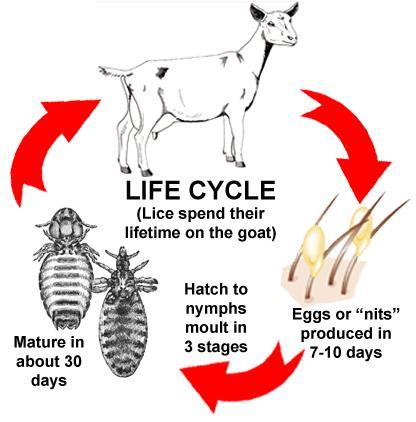
1 minute read
Lice
from MGBA Hoof 'N Around
by suez230
Agfact A7.9.7. Second edition 2004 Robert North BVSc
*This information is provided as examples from individual Studs & internet research. It is supplied for general reference & educational purposes only. This information does not represent the management practices or thinking of all goat breeders and/or the veterinary community. Any person making the decision to act upon this information must consult with a Veterinarian first and is solely responsible for the effects of their own actions.
Advertisement
Goat Lice are small (only 1-2mm long) and are grey or cream in colour and are host specific (don’t live on other species).
Signs of infestation include dull coat and loss of body condition, (due to blood sucking), the coat is often quite ragged in appearance.
Lice spread by direct contact between goats and may also be transferred between animals by human contact, grooming equipment, shared housing etc.
Infestation seems to be worst in the cooler months, probably because the animal has a coat offering protection to the lice.
Treatment with chemical insecticide is always affective. Stalls and yards should be treated too and left empty for 4 days.
ALWAYS READ THE LABEL. And contact the Vet or DPI for a suitable product (some products are not to be used on goats).
Self-Limiting
Lice are usually a self-limiting infestation. Well-fed goats in good general health will carry very few lice. Infested goats will shrug off infestations when their conditions improve, usually with a rising plane of nutrition in early spring.
Further Information
Contact your Veterinary practitioner or the Department of Primary industries in your state.
Printed with permission from NSW DPI & F
Send in your articles!!!!












